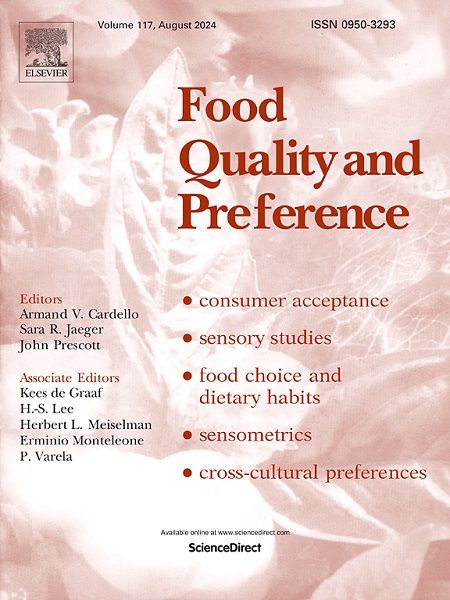Clean food consumerism: scale development and validation
IF 4.9
1区 农林科学
Q1 FOOD SCIENCE & TECHNOLOGY
引用次数: 0
Abstract
Clean foods are perceived as natural, pure, simple, and nutrient-dense foods that support overall health and well-being, prioritizing nutritional quality, transparency in sourcing, and ethical farming practices. Clean food consumerism is an emerging and growing international phenomenon, albeit one that is often loosely defined and under-researched. To enable consistency and encourage research in the area, a scale to measure clean food consumerism (CFC) is proposed. The structured scale-development procedure involved four stages and four quantitative and qualitative studies: scale design, item generation and evaluation, item purification, initial validation, and final validation. The final version of the CFC scale contains 18 items in a 5-factor structure: health benefits (6 items), ease of use (3 items), product familiarity (3 items), product authenticity (3 items), and transparency of the manufacturing process (3 items). Two additional factors—consumer lifestyle and eating habits—were identified as having a direct impact on clean food consumption. All tests confirm that the proposed CFC scale is suitable for measuring clean food consumerism. The development and introduction of this scale advances the understanding and conceptualization of this phenomenon and hopefully stimulates further research.
清洁食品消费主义:规模发展与验证
清洁食品被认为是天然、纯净、简单、营养丰富的食品,支持整体健康和福祉,优先考虑营养质量、采购透明度和道德农业实践。清洁食品消费主义是一种新兴的、日益增长的国际现象,尽管这一现象的定义往往很松散,研究也不够充分。为了保持一致性并鼓励该领域的研究,提出了一种衡量清洁食品消费主义(CFC)的尺度。结构化量表开发过程包括四个阶段和四个定量和定性研究:量表设计、项目生成和评估、项目纯化、初始验证和最终验证。CFC量表的最终版本包含18个项目,分为5个因素结构:健康效益(6个项目)、易用性(3个项目)、产品熟悉度(3个项目)、产品真实性(3个项目)和制造过程透明度(3个项目)。另外两个因素——消费者的生活方式和饮食习惯——被认为对清洁食品的消费有直接影响。所有测试均证实,建议的含氯氟烃比额表适用于衡量清洁食品消费主义。该量表的发展和引入促进了对这一现象的理解和概念化,并有望刺激进一步的研究。
本文章由计算机程序翻译,如有差异,请以英文原文为准。
求助全文
约1分钟内获得全文
求助全文
来源期刊

Food Quality and Preference
工程技术-食品科技
CiteScore
10.40
自引率
15.10%
发文量
263
审稿时长
38 days
期刊介绍:
Food Quality and Preference is a journal devoted to sensory, consumer and behavioural research in food and non-food products. It publishes original research, critical reviews, and short communications in sensory and consumer science, and sensometrics. In addition, the journal publishes special invited issues on important timely topics and from relevant conferences. These are aimed at bridging the gap between research and application, bringing together authors and readers in consumer and market research, sensory science, sensometrics and sensory evaluation, nutrition and food choice, as well as food research, product development and sensory quality assurance. Submissions to Food Quality and Preference are limited to papers that include some form of human measurement; papers that are limited to physical/chemical measures or the routine application of sensory, consumer or econometric analysis will not be considered unless they specifically make a novel scientific contribution in line with the journal''s coverage as outlined below.
 求助内容:
求助内容: 应助结果提醒方式:
应助结果提醒方式:


